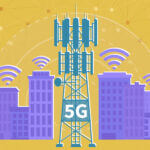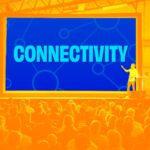
Most people probably remember Nokia for its reputation as one of the biggest mobile manufacturers before the iPhone revolution. After the irruption of Apple in the mobile landscape, the Finnish company quickly lost market share to a point where it became relegated and almost forgotten.
But while their phones might not have the market presence they once had, Nokia’s network division is a leader in infrastructure building across the world with a strong market presence in 150 countries. Since 2019 the company has made a strong push for 5G, and their IoT 5G solution is about to change the world as we know it.
What is WING?
Nokia’s Worldwide IoT Network Grid (WING) is a cloud-native, globally-distributed, IoT core with a pay-as-you-go, outcome-driven XaaS business model. In simpler terms, you can think of it as a shortcut for operators that want to implement an IoT solution but don’t have the resources to build their own infrastructure.
Györgyi Krisztyian, Nokia’s marketing manager, has stated that WING is about early adoption for companies that seek worldwide 5G IoT solutions for their clientele. Operators already working with Nokia can just upgrade to the new 5G solution, making the process as seamless and easy as possible, always a welcome perk with the adoption of new technologies. Nokia’s target here is more than just mobile networks, what the Finnish giant is aiming for are emerging markets.
The 5G Revolution
Both hardware and software development companies are dealing with the fact that mobile markets are over-saturated. The smartphone market has been stagnant for the last couple of years. Everyone who can buy a smartphone probably already has one, and making an app with mass appeal is getting harder by the minute. Brian O’Donnell, Nokia’s Head of Strategy believes that this is a great opportunity to branch out into new areas:
“Smartphone penetration has hit a saturation point in most markets, compelling operators to broaden their horizons. In concert, 5G and IoT can unlock a potent diversification strategy for operators that will allow them to generate a significant percentage of their revenue from new business lines and models”
Each Telecom generation has been more advanced than its ancestor by leaps and bounds. 1G gave us wireless voice transmission. 2G brought digital networks with SMS and roaming services. 3G brought a limited mobile internet experience allowing basic browsing features and the app ecosystem.
4G brought all-IP services, high data transfers, streaming capabilities, and unified network architecture and protocols. And now 5G promises another revolution in communications, with data caps X100 higher than 4G (up to 10Gbps) and a latency of 1 millisecond over 4G’s 200 milliseconds.
To put it in perspective, it would take you longer to buy a 4K movie on your phone than it would take the movie to be downloaded to your device. Obviously, this new environment isn’t just an opportunity for user-end-point systems but also for IoT technologies in and outside of the smartphone ecosystem.
Spreading Your WINGs
Tomorrow’s landscape will be very different for IoT capabilities. Data caps and speed are our biggest limitation, but with 5G the dam gate is blown wide open. Now we have to figure out what to do with all this data. According to Nokia, 5G IoT cases include assisted and autonomous vehicles, critical public services, real-time industrial monitoring, and control as well as remote healthcare.
One of the biggest improvements is related to cloud-based computing, with faster speeds and latency akin to a fiber-wire. We are finally on the verge of parallel or simultaneous cloud-based wireless processing. This means that cities can go smart for a smaller budget, since new smart-devices such as traffic light, sensors or cameras will no longer need physical cables to connect to the city’s mainframe.
Industries can build their networks on a global scale, having a single mainframe managing production schedules for different machines in different continents, making decisions in real-time based on market data and distribution costs while the supervisor is checking the whole process from his phone while sitting at home.
How different would the COVID-19 pandemic be today if we each had a health assistant keeping track of our temperature as well as heart rate, sharing that information with our local hospital and cross-referencing the data in real-time with our acquaintance’s devices to track the path of infection from patient to patient?.
In fact, the biggest challenge for software development companies is that 5G might outright change cloud-computing paradigms as we know them. Think about it for a second. Cloud-based services are usually built on the assumption that powerful computations are going to be run by a mainframe, or that you need to save your data on a hard drive somewhere so that it can be accessed from other locations. But what if your office computer is connected to a wireless 5G network? You could be in a different city and download those files or run your modeling data and get results as fast as if you had used a traditional cloud-based service
It’s too early to tell just what 5G will mean for IoT in the long run, but Nokia is clearly cheering for it. Chinese based giants like Huawei are also pushing for 5G adoption, and most companies are expected to follow suit in the coming months. 5G is here to stay, and software development services have to step up to meet the demand of a world that’s about to change.




 New Episode
New Episode





 Latest IoT News
Latest IoT News









